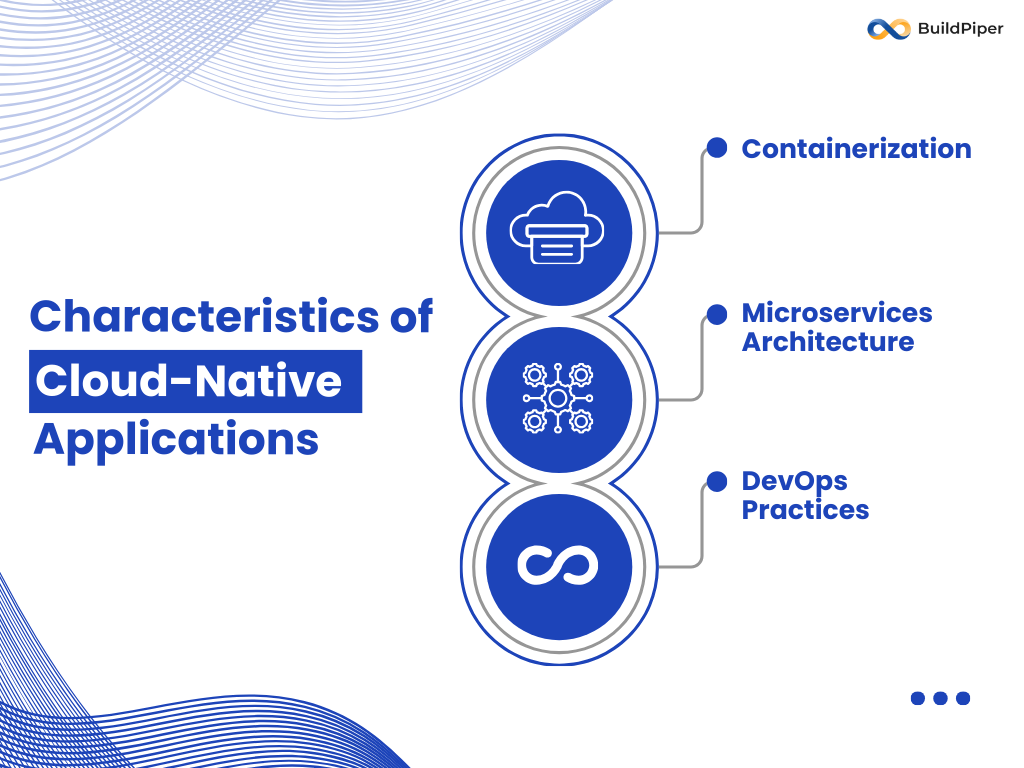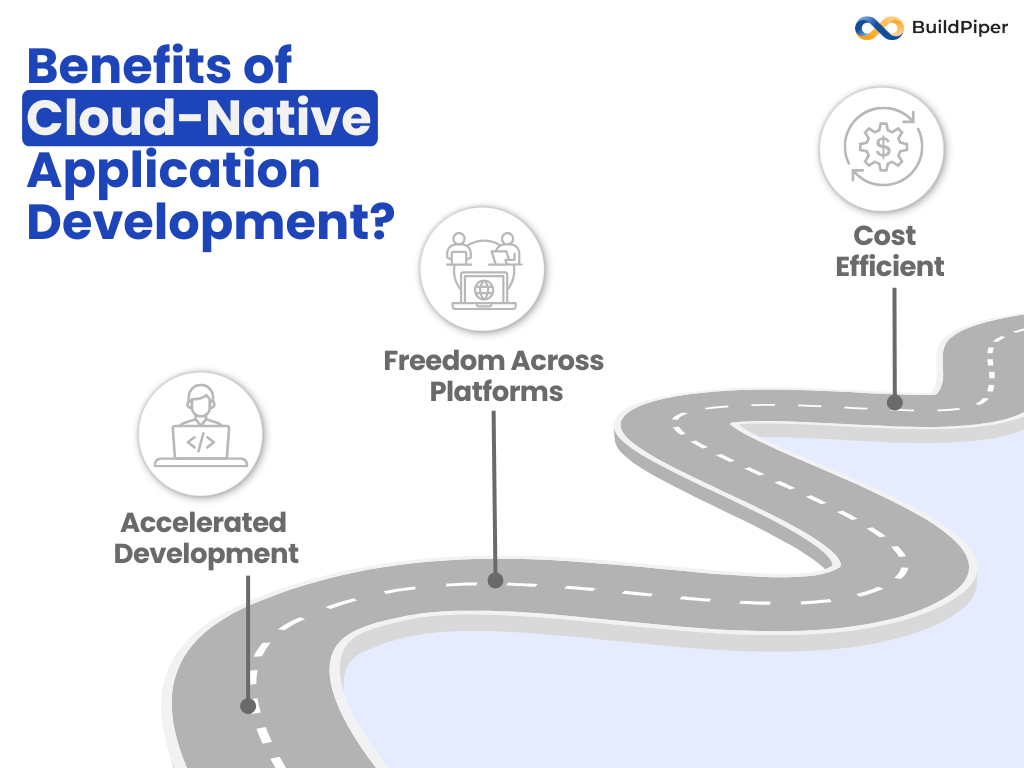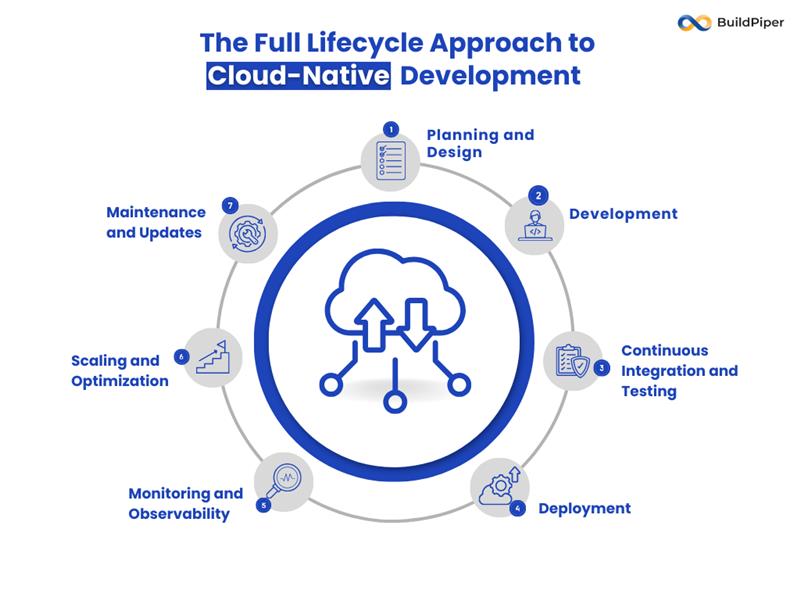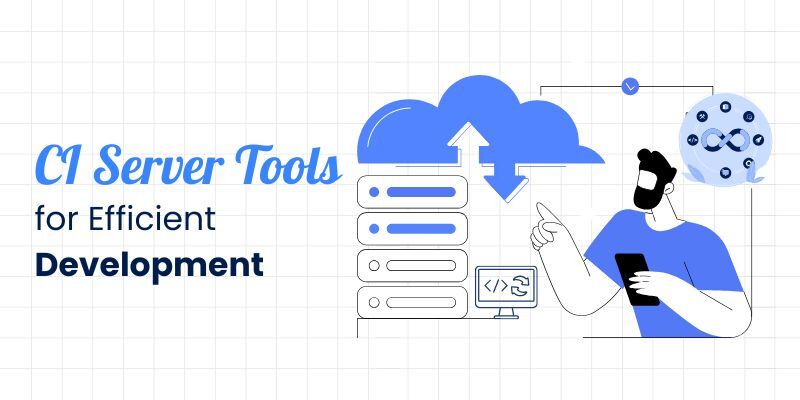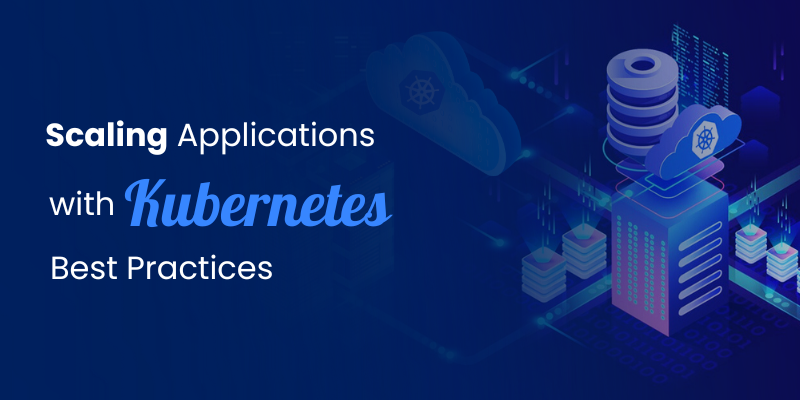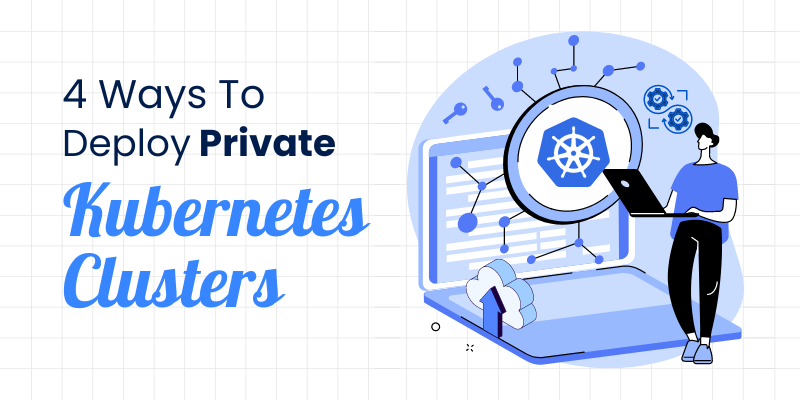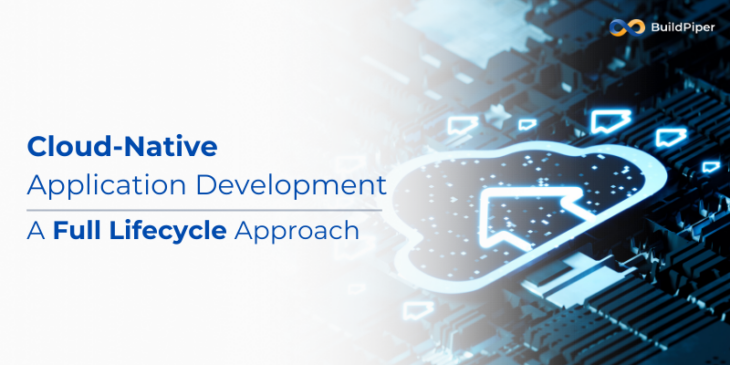
Building Tomorrow’s Applications, Today
Modern challenges require modern solutions, and cloud-native application development delivers just that. By embracing a full lifecycle approach, businesses can design, build, and scale applications with unmatched flexibility. Let’s explore how this game-changing methodology is shaping the future of modern application development.
Cloud Native Definition
Cloud-native refers to embracing the unique opportunities and significantly different architectural challenges presented by the cloud in contrast to traditional on-premises infrastructure.
In contrast to monolithic applications that require building, testing, and deploying as a single unit, cloud-native architectures break down components into loosely connected services. This approach simplifies complexity and enhances the speed, flexibility, and scalability of software delivery.
What Are Cloud-Native Applications?
Cloud-native applications are software programs composed of multiple small, independent units known as microservices. Unlike traditional monolithic applications designed as single, unified structures, cloud-native applications break down functionalities into smaller, self-contained microservices. This approach enhances agility, allowing each microservice to operate independently and efficiently, requiring minimal computing resources.
Cloud application consulting can help businesses navigate the complexities of cloud-native architectures, ensuring they adopt the most suitable approach for their specific needs.
Cloud-Native vs. Traditional Enterprise Applications
Traditional enterprise applications were developed using rigid, less adaptive methodologies. Developers would typically bundle large sets of functionalities before releasing them for testing, resulting in longer deployment timelines and limited scalability.
In contrast, cloud-native applications adopt a collaborative and highly scalable framework across platforms. By leveraging automated tools for building, testing, and deployment, cloud-native applications streamline development processes. This automation enables developers to quickly set up, deploy, or replicate microservices, a capability not feasible with traditional application models.
Characteristics of Cloud-Native Applications
Cloud-native applications possess several distinctive characteristics that set them apart from traditional applications. Here are the key characteristics:
1. Containerization
Cloud-native applications are typically packaged as lightweight, portable containers. Containers encapsulate everything needed to run the application, including code, runtime, libraries, and dependencies. They enable consistent deployment across different environments, from development to production.
2. Microservices Architecture
Instead of monolithic structures, cloud-native apps are often built as collections of loosely coupled microservices. Each microservice focuses on a specific business capability, enabling teams to independently develop, deploy, and scale components.
3. DevOps Practices
Cloud-native development embraces DevOps principles, fostering collaboration between development (Dev) and operations (Ops) teams. Continuous integration/continuous deployment (CI/CD) pipelines automate testing, deployment, and monitoring processes, enabling rapid and reliable updates.
What Are The Benefits of Cloud-Native Application Development?
Cloud-native application development provides numerous benefits for businesses looking to build scalable, efficient, and resilient software solutions. Here’s an overview of the key advantages:
1. Accelerated Development
The cloud-native approach empowers developers to streamline development processes, resulting in faster delivery and higher-quality applications. By leveraging containerized applications and DevOps practices, developers bypass the need for specific hardware infrastructure. This flexibility enables rapid responses to changes, such as deploying multiple updates daily without disrupting app functionality.
2. Freedom Across Platforms
Cloud-based application development ensures a consistent and reliable operating environment, eliminating concerns about hardware compatibility. Developers can rely on the cloud provider to handle infrastructure complexities, allowing them to concentrate on enhancing the application’s value rather than configuring underlying systems.
3. Cost-Efficient Operations
Cloud services operate on a pay-as-you-go model, charging only for the resources your application actively consumes. For instance, during peak user traffic periods, you incur additional costs only for those times, avoiding unnecessary expenses on underutilized resources throughout the year.
For organizations that are new to cloud-native development, cloud application consulting can help identify the most cost-effective and scalable solutions.
The Full Lifecycle Approach to Cloud-Native Development
A cloud-native application’s lifecycle encompasses multiple stages, each essential for delivering robust, scalable, and efficient solutions. Below is a detailed exploration of the full lifecycle approach:
1. Planning and Design
Effective cloud-native development begins with meticulous planning and design. Key considerations during this stage include:
- Requirement Analysis: Understand business goals, customer needs, and technical requirements.
- Architecture Design: Choose a microservices architecture, API gateways, and event-driven models based on the application’s needs.
- Technology Stack Selection: Identify tools and platforms such as Kubernetes for orchestration, Docker for containers, and cloud providers like AWS.
If you’re looking for guidance on how to transition to cloud-native technologies, AWS cloud engineering expertise can provide the foundational knowledge to help businesses migrate their infrastructure and workloads to the cloud securely and efficiently.
2. Development
The development phase involves building the application’s core functionalities while adhering to cloud-native principles.
- Microservices Implementation: Develop services independently, enabling teams to work on different components simultaneously.
- Containerization: Use container platforms like Docker to package services with their dependencies for seamless deployment.
- APIs and Integrations: Design APIs that facilitate communication between microservices and external systems.
3. Continuous Integration and Testing
CI ensures that code changes are automatically integrated and tested to identify and resolve issues early.
- Automated Testing: Implement unit tests, integration tests, and performance tests to ensure code quality.
- Version Control: Use tools like Git for collaborative code management.
- Build Automation: Automate the process of compiling and packaging applications.
4. Deployment
Cloud-native applications benefit from automated and efficient deployment processes.
- CI/CD Pipelines: Implement pipelines using tools like Jenkins, GitLab CI/CD, or CircleCI to automate deployment workflows.
- Blue-Green Deployments: Minimize downtime by routing traffic between production and staging environments during updates. Easily roll back to the previous version if issues arise, ensuring reliability and seamless recovery.
- Kubernetes Orchestration: Use Kubernetes to manage containerized applications, ensuring scalability and reliability.
5. Monitoring and Observability
Continuous monitoring is vital for maintaining the health and performance of cloud-native applications.
- Logging and Metrics: Collect logs and metrics using tools like Prometheus, Grafana, and ELK Stack.
- Application Performance Monitoring (APM): Track performance metrics to identify bottlenecks and optimize resource utilization.
- Incident Response: Set up alerts and incident response workflows for proactive issue resolution.
6. Scaling and Optimization
Scaling ensures that applications meet demand while maintaining cost efficiency.
- Horizontal Scaling: Add instances of microservices to handle increased traffic.
- Autoscaling: Enable automatic scaling based on predefined thresholds.
- Cost Optimization: Use cloud cost management tools to monitor and reduce expenses.
7. Maintenance and Updates
Cloud-native applications require continuous updates to stay relevant and secure.
- Regular Updates: Deliver feature enhancements and bug fixes frequently.
- Security Patches: Implement patches to address vulnerabilities promptly.
- Feedback Loops: Collect user feedback and incorporate it into future updates.
Partnering with cloud platform engineering services during this stage can ensure your design aligns with your business goals and future scalability.
The Future of Cloud-Native Applications
Cloud-native applications have experienced a surge in adoption in recent years and are widely regarded as the future of modern application development. A report by Precedence Research reveals that the global cloud-native platform market, valued at approximately $4.6 billion in 2023, is projected to grow to an impressive $52.84 billion by 2033.
The evolution of cloud-native applications is set to undergo remarkable changes, driven by advancements in artificial intelligence, machine learning, and emerging technologies like green cloud and quantum computing.
Moreover, these applications are expected to incorporate robust security measures seamlessly into CI/CD pipelines, emphasizing greater flexibility and scalability across multi-cloud environments.
Transform Cloud-Native Complexity with BuildPiper
BuildPiper is an end-to-end DevSecOps and microservices delivery platform designed to streamline cloud-native application development. With capabilities like automated CI/CD pipelines, Kubernetes management, and security integration, BuildPiper empowers businesses to scale their applications efficiently while maintaining high quality and security. Explore BuildPiper to revolutionize your cloud-native journey and achieve faster time-to-market.
Frequently Asked Questions
1. What is a cloud-native application?
A. A cloud-native application is built using microservices, containers, and cloud platforms. It breaks down functionalities into small, independent services, offering scalability, flexibility, and faster development.
2. How does cloud-native development differ from traditional development?
A. Cloud-native development uses a modular approach with microservices and automation tools, enabling faster deployments and better scalability compared to traditional monolithic applications.
3. What are the key benefits of cloud-native application development?
A. Cloud-native applications offer accelerated development, cost efficiency, and seamless scalability, allowing businesses to respond quickly to changes and optimize resource usage.
4. How can cloud-native consulting services help my business?
A. Cloud-native consulting services guide businesses through the complexities of cloud-native architecture, ensuring the best approach for scalability, performance, and cost-efficiency.
5. How does BuildPiper support cloud-native application development?
A. BuildPiper is an end-to-end central DevSecOps platform that automates CI/CD pipelines, Kubernetes management, and security integration, helping businesses streamline their cloud-native development and accelerate time-to-market.

